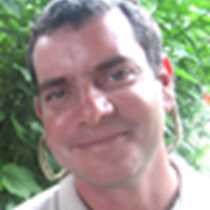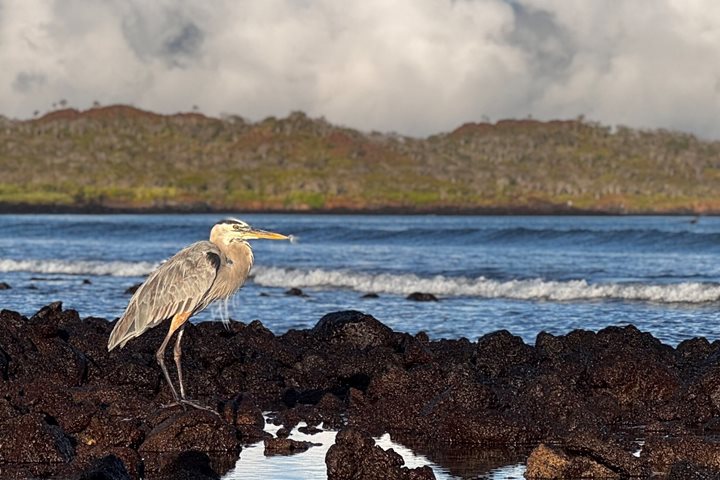Today we started our day at the northwest end of Santa Cruz Island, at a visitor site of the national park known as Cerro Dragon, named after the Galapagos land iguanas. After our breakfast, we disembarked on a rocky coast that took us to a trail by the coast. The morning was spectacular, and blue skies and sunshine were our companions during this hike. On the coast we spotted several marine iguanas sun basking on the green carpet mat plant, creating perfect photo opportunities. Further on we walked by a brackish lagoon that took us to the land iguana’s territory. After learning about the ecology and biology of these endemic reptiles we climbed the small hill found in this place. From the top we had an amazing view of Santiago Island and a group of small satellites islets known as Guy Fawkes. Later on we walked back to the coast to head back to the National Geographic Endeavour.
Later in the morning we had two optional activities. Shallow and deep-water snorkeling were both offered to our guests. On the deep water snorkel the condition were pretty good. Calm and good visibility water was waiting for us. In the water we spotted many different species of colorful reef fish such as parrots, damsels, surgeons, and creoles fish. Sea lions were part of the experience, and even a huge manta ray appeared from the deep surrounding waters. it was a great activity.
After our Ecuadorian lunch in the afternoon we continued our activities, with Zodiac cruising and kayaking as our options. On our Zodiac ride many different species of sea bird were found, such as blue-footed boobies, great blue herons, lava herons, pelicans, frigates, and brown noddies among a beautiful landscape surrounded by mangroves. Sea turtles, rays, sting rays, and puffer fish were spotted in between the mangroves nearby the coast. Then we headed back to the National Geographic Endeavour for our circumnavigation around one of the most famous islets, Daphne Mayor. On this place a couple of British scientists have been studying Darwin finches for over 40 years, trying to do what Darwin could not: measure the changes in the sizes of the finch’s beaks when affected by environmental conditions of each year. What a great way to finish another memorable day in this magical place.







